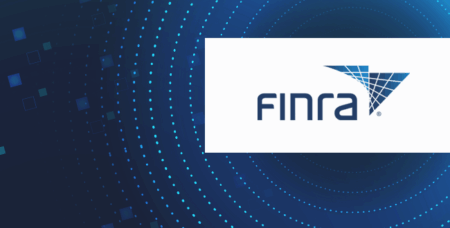What is a Record? How Government Agencies Are Managing Social Apps, Collaboration, and More
The technology employees use to communicate has changed dramatically. Remote and hybrid work models have boosted the use of tools like Slack, Zoom and Microsoft Teams that employees rely on to do their jobs effectively. Instant messaging and video conferencing are booming, while many businesses and government agencies are choosing text messaging and social media to engage with audiences and provide services to the public. Technology has forever altered how we communicate and collaborate.
The benefits of using such technology to connect with audiences and colleagues are undeniable. There is direct value to agencies utilizing these powerful tools. However, all these shifts in communication raise important questions about information governance and records management. How do you define a record when communication occurs across different platforms? How do state and local governments gather and securely store these records to meet their recordkeeping requirements?
Below, we take a closer look at changes in records management and how state and local governments can safeguard themselves against potential risks that today's modern communication and collaboration technologies pose.
What’s happening with records management
Changes in communication are happening across the board. Officials can now connect more easily with constituents over social media, meeting voters where they spend their time and opening new pathways to reach new audiences. They can run virtual meetings or town halls, opening these meetings to more attendees than could ever attend in person. Internal employees, now more dispersed than ever due to remote work accommodations, lean on tools like Zoom, Slack and Microsoft Teams to stay connected and work efficiently.
There are countless records to capture and store when this communication happens digitally. This dramatically increases the lift required by recordkeeping teams and how they qualify which records they will capture and store to meet their recordkeeping requirements.
The unique challenges of modern communication channels
As new generations enter the workforce, email is losing ground as the digital communication channel of choice for government agencies. Instant messaging is an ongoing, fast, and reliable form of communication. Social media removes communication barriers, making it easier than ever to reach new audiences on the platforms where they spend their time. These tools are powerful—they also pose unique risks.
Organizations must redefine what is a business record and develop new processes to mitigate potential risks. For example, how does one store an ongoing conversation in Slack or a comments thread on Twitter? A single message might seem harmless, but when placed in the context of a broader conversation, it might become a confidential record.
Robert Cruz, VP of Information Governance at Smarsh, addressed this challenge in a recent webinar:
"The first thing that comes up is what’s the unit of measure of a record? Is it one individual chat, or is it the fact that these now are persistent, multimodal, interactive conversations? When I look at that one individual message, it may not mean anything, but in context of a series of other messages, now you may have something that is going to trigger a record obligation."
Some of the unique challenges facing records management include:
- Ongoing, multi-modal conversations on Slack, Microsoft Teams, etc.
- Features without reliable methods of capture
- Changing technology that can abruptly alter records management processes
- Large data items like long Zoom calls or webinars
The task of reliably identifying and storing records is not easy. Technology is an ever-shifting landscape, and communication tools are always evolving. It’s essential to recognize how employees work so agencies can be prepared to enable the tools and provide the necessary policies and training for employees to do their jobs effectively and securely.
"We see firms struggling dramatically with this because they are still leveraging governance, risk, compliance and discovery tools that are primarily designed for email,” says Cruz. “They were designed for a message. So, there is a fundamental disconnect in understanding that conversational context and questions of how firms can best create and preserve that historical record."
Strong records retention policies support records management
With a robust records retention policy, state and local governments can use the tools that benefit their agency while ensuring they’re protected against the fallout of mishandled records. Each organization must set its policies and ensure these are followed. Installing guardrails to mitigate risks is imperative. A reliable governance program and an easy-to-use technology solution that allows you to store, search and produce electronic communications efficiently ensure organizations have steadfast tools to monitor communication and collaboration platforms.
How Smarsh Can Help
Smarsh simplifies the capture and storing process of more than 100+ channels of communications data, from text messages to mobile apps. State and local governments can meet recordkeeping obligations, manage risk and reduce the time and cost of responding to public records requests from a single, comprehensive solution.
Share this post!
Smarsh Blog
Our internal subject matter experts and our network of external industry experts are featured with insights into the technology and industry trends that affect your electronic communications compliance initiatives. Sign up to benefit from their deep understanding, tips and best practices regarding how your company can manage compliance risk while unlocking the business value of your communications data.
Ready to enable compliant productivity?
Join the 6,500+ customers using Smarsh to drive their business forward.





Subscribe to the Smarsh Blog Digest
Subscribe to receive a monthly digest of articles exploring regulatory updates, news, trends and best practices in electronic communications capture and archiving.
Smarsh handles information you submit to Smarsh in accordance with its Privacy Policy. By clicking "submit", you consent to Smarsh processing your information and storing it in accordance with the Privacy Policy and agree to receive communications from Smarsh and its third-party partners regarding products and services that may be of interest to you. You may withdraw your consent at any time by emailing [email protected].
FOLLOW US